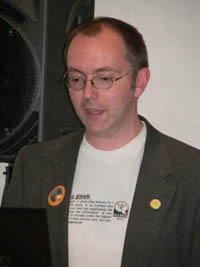 Last year at the Northwest Tea Festival, we got feedback that some of the attendees would like more advanced classes. This year, I have the honor of being the exclusive presenter of advanced classes. I’m hoping that they fill quickly and show the world that American tea drinkers are serious about tea and interested in more than introductory-style tea education.
Last year at the Northwest Tea Festival, we got feedback that some of the attendees would like more advanced classes. This year, I have the honor of being the exclusive presenter of advanced classes. I’m hoping that they fill quickly and show the world that American tea drinkers are serious about tea and interested in more than introductory-style tea education.
The classes will be offered in two pairs of topics. Each topic has a beginner level (free) for those who are newer to the topic and as orientation for the advanced class. The advanced level (with registration fee) will take the topic further, looking at the real story behind the often oversimplified claims used to sell tea.
The first pair of classes will be called The Teamaker’s Art and both will shed light upon how the leaves you take home from your local tea shop are grown and processed. My goal is to have you leave not only knowing what goes on at major points in tea processing, but also have a deeper understanding of the complex skills and artistry required to make a truly good tea. Teamaker’s Art 1 (Saturday, Oct 3rd) will look at the various choices made by a teamaker from soil to finished tea. Teamaker’s Art 2 (Sunday, Oct 4th) will dig even deeper into the subject and explore how selected processing steps and the choices made by the teamaker affect the internal chemistry of the leaf and, consequently, the experience of the tea drinker who brews it.
The other pair is Tea and Caffeine, although both classes will touch a bit on plants other than Camellia sinensis and a few molecules besides just caffeine. Here my goal is to shed some light on the complexity of caffeine, especially when the source is the tea plant. Tea and Caffeine 1 will mainly look at what caffeine is, what it isn’t, and dispel several of the most pernicious tea myths in circulation. Jump then to Tea and Caffeine 2 to learn how caffeine works its magic in the brain, how it combines with other compounds in tea to cause sometimes unexpected effects, as well as look at some recent research into the health risks and benefits of caffeine.
Anyone can take either (or both) levels. If you jump into the advanced one without taking the first one, it will be more challenging, but don’t let that keep you away!
Seating at the free level-1 classes is first come first served, so get there early! To register and reserve your seat in advance for the level-2 classes, you can either call the Perennial Tea Room at 888-448-4054 or click below to pay online:
Hope to see you there!
